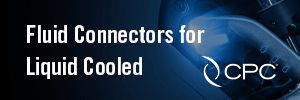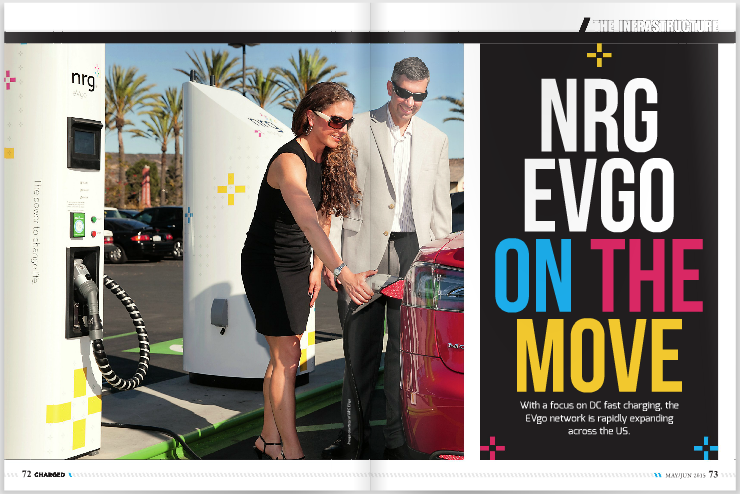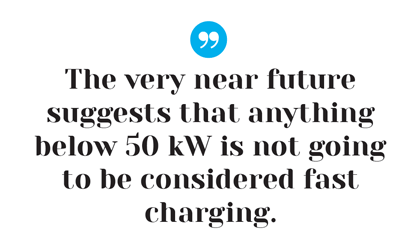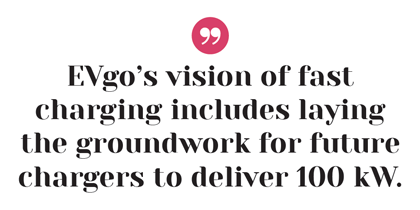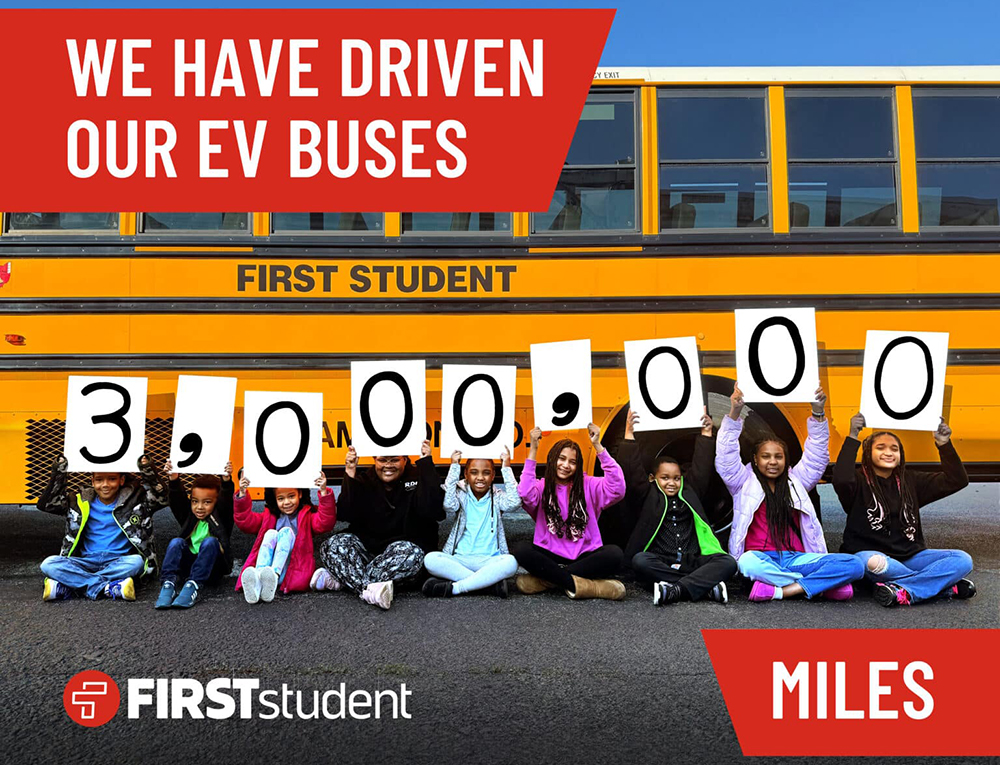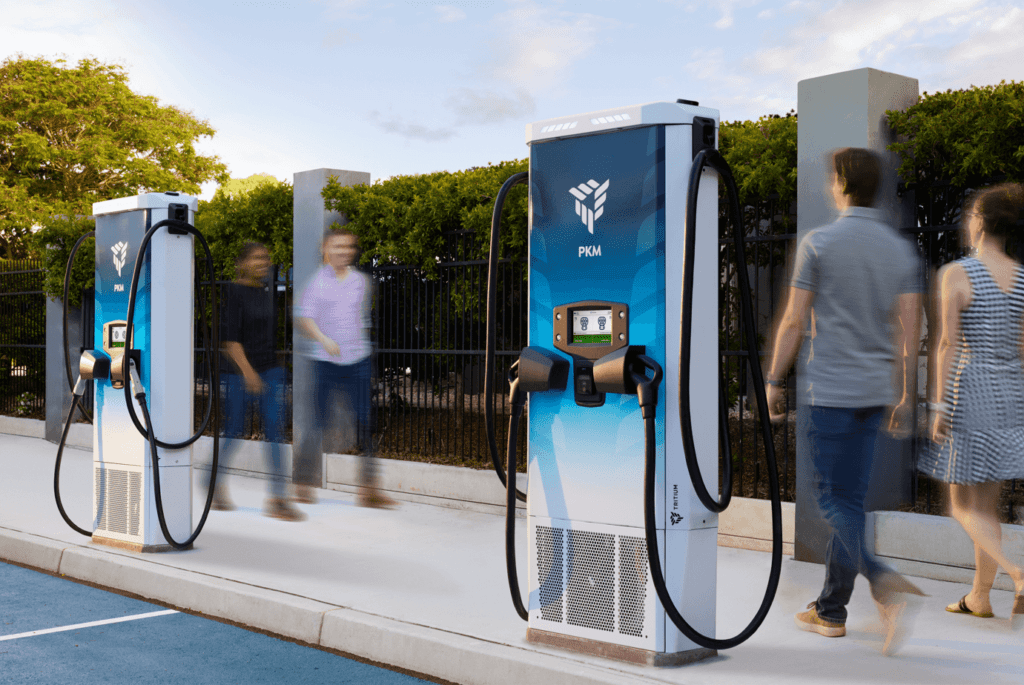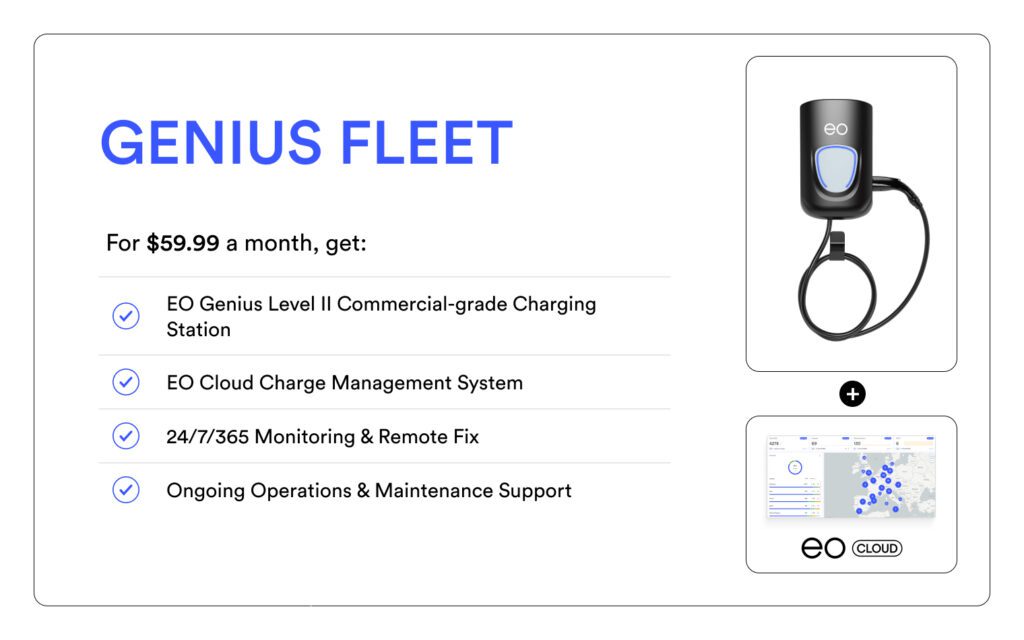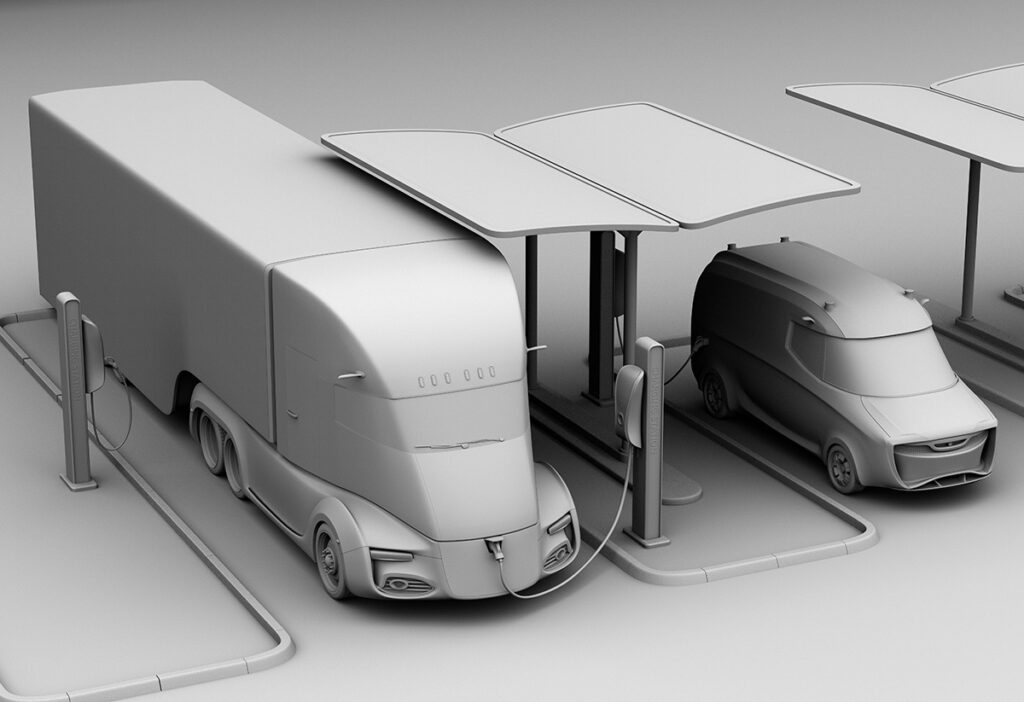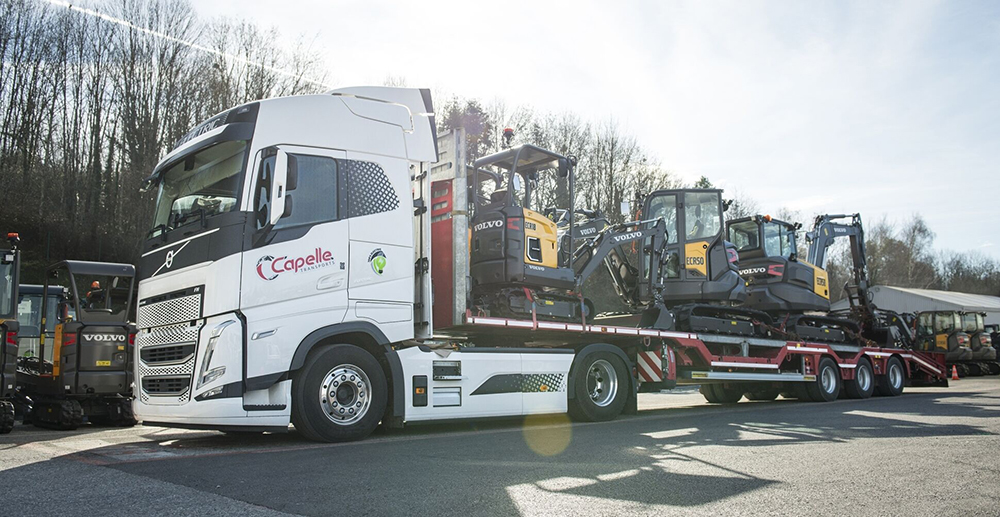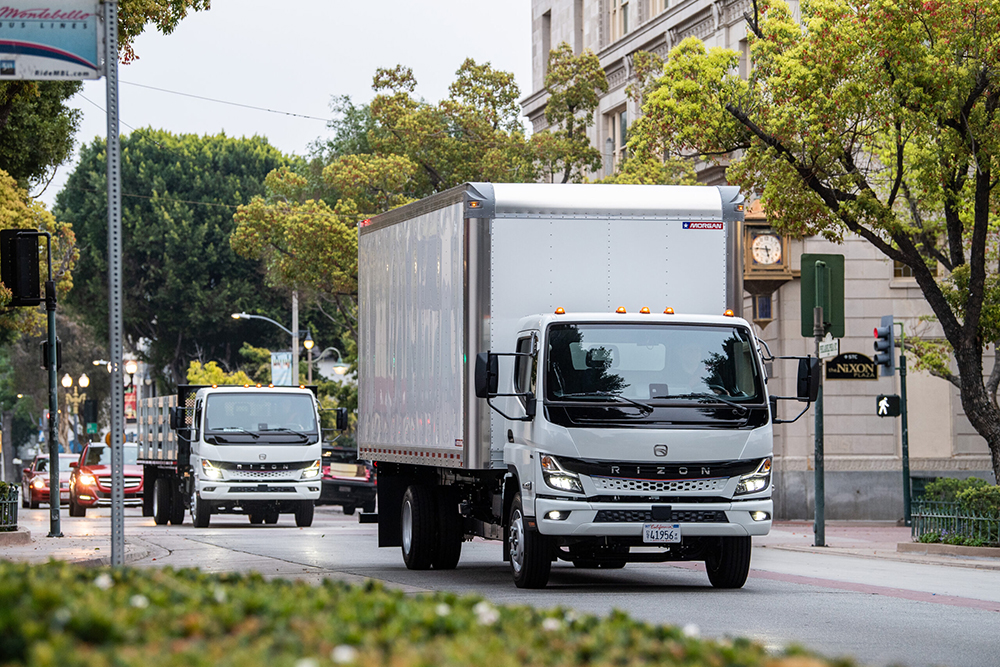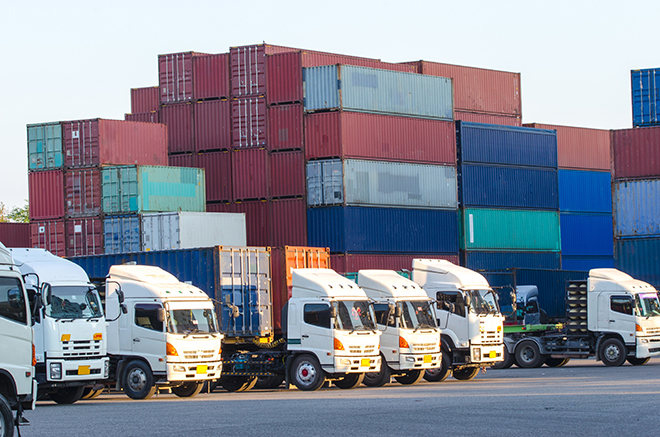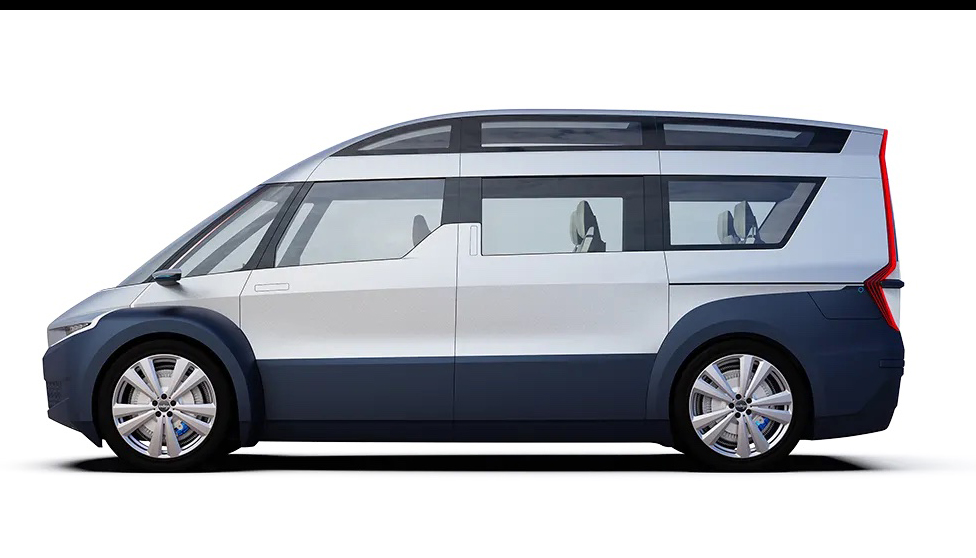Q&A with Arun Banskota and Brendan Jones.
In the past year, the NRG EVgo network has quietly passed some major milestones in the EV charging industry. The company now has more public DC fast charging sites than anyone else – even more than Tesla’s vast Supercharger network. EVgo also has the highest number of CHAdeMO and CCS fast chargers installed on its network, serving every EV made by the major automakers and any Tesla Model S with a CHAdeMO adapter. In fact, as of May 2015, it has over four times more fast chargers than any other public network.
The company can also lay claim to the most powerful network of CHAdeMO and CCS chargers. While others are rolling out DC chargers in the 20 kW range, EVgo has no stations below 44 kW. NRG EVgo’s network of Freedom Stations has been providing drivers with range confidence since 2011. It now operates in 19 markets, with full operations in another 7 markets coming by the end of the year. In total, it’s currently operating more than 350 DC fast chargers in the US: more than 100 in the LA market; 50 in the Dallas/Fort Worth and Houston areas; 28 in Chicagoland and 10 coming online in Denver. Dozens more sites in half a dozen metro areas are in the permitting and construction process.


The EVgo network has doubled in size in just the last 8 months. Still, despite its growth and size, it’s entirely possible that you haven’t even heard of it. Charged recently chatted with the two company execs most responsible for the development and installation of EV infrastructure: Arun Banskota , the President of NRG EVgo, and Brendan Jones, who recently joined the team after 21 years in the auto industry, most recently running the EV arm of Nissan North America.


Charged: EVgo has become one of the largest and fastest-growing DC fast charging networks in America. However, it seems that Tesla’s charging network receives most of the mainstream media attention. How do you think the two networks stack up?
Arun Banskota: Tesla has more chargers, because they have as many as 10 chargers per location, but EVgo has more locations. You also need to keep in mind that the Tesla network exists to serve just one car brand, Tesla, while EVgo serves all car brands, including any Model S driver who wants to use the Level 2 stations or the CHAdeMO fast chargers, with an adapter made by Tesla.
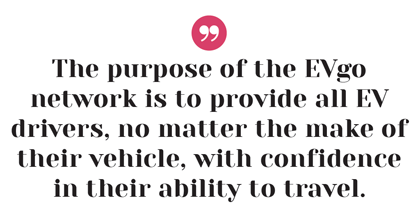

The purpose of the EVgo network is to provide all EV drivers, no matter the make of their vehicle, with confidence in their ability to travel. It is not just about that ability city to city. It is arguably even more important to provide that confidence in the greater metro area of a city. Houston, for example has a contiguous footprint that is 8,778 square miles. It is bigger than the state of New Jersey. The Freedom Station sites in Houston allow EV drivers, no matter their vehicles’ range, to roam that entire region with ease. It gives them the ability to quickly recharge in a location where they can actually get something done.
The NRG EVgo networks are growing so quickly that a driver last month drove his Nissan LEAF, starting in south San Diego, California, to the San Francisco Bay Area in one day. He drove 600 miles all in the same day, thanks to the EVgo network. That is why they are called Freedom Stations.
Charged: You will be in 26 markets by the end of 2015. How do you choose which areas to expand to?
AB: We started in Texas because NRG serves over 2 million retail electricity customers in Texas and has thousands of employees there. It was a good place to demonstrate the complete business model. Today, Houston and Dallas/Fort Worth are both significant metropolitan areas with growing bases of EV sales. They are our most mature networks, but our fastest growing are in California, where 4% of auto sales are EVs, and Atlanta – thanks to Georgia’s history of significant tax incentives for EV purchases [Editor’s note: In April, Georgia eliminated the state’s $5,000 tax credit for EV purchases, and imposed a $200 yearly user fee]. In Atlanta, with help from our partner site owners like Simon Properties and AAA Car Care Centers, we have been able to get 28 locations online in just the last six months – opening another 9,000 square miles to EV owners.
We continue to target emerging markets where EV sales are growing and creating the need for infrastructure to give confidence to the consumer. One thing is for certain: the network will never be complete, because we will always continue to build Freedom Station sites to meet the needs of the rapidly expanding EV driver base.
Charged: We are starting to see major utilities attempt to enter the EV charging space. Often these plans include funding network infrastructure with rate hikes charged to all consumers. What do you think of these sorts of projects?
AB: Our business is building range confidence for EV drivers. Doing that requires infrastructure, which we are investing in all over the nation. I don’t think that utilities should be excluded from involvement, but they should not be using rate-based dollars to invest in rapidly changing technologies for a relatively small number of EV owners. When you build an infrastructure on rate-based dollars, you can discourage private investment in infrastructure and make everyone, even people who may not be able to afford to buy a car, pay for this infrastructure.


With the rate of change in this industry, these charging station assets will not have the typical useful life of power plants, power lines, and transformers. They are on much more of a consumer technology cycle. It is also important to build the right network that will truly make EV driving viable. Most utility plans, so far, have what sounds like large numbers of chargers, but they are almost all Level 2 charging, which is great for home and work charging, but does consumers little good when it comes to quickly and easily charging on the go.
Our network is future-looking, with the ability to house not just DC fast charging, but next-generation charging that is double or more the capacity of current technology. It’s not science fiction, but systems that are right around the corner. There is also the issue of compatibility, because there are more than 3,000 utilities in the US, which makes it impossible to have a standard of delivery. If each of those utilities develops their own mini-network, it becomes much like the early stages of cellular telephone networks. This puts the customer in a situation of being left with no service outside of his or her own small network. The solution to that ultimately was the first roaming plans and now national networks, which operate seamlessly. That is the network that EVgo already provides.
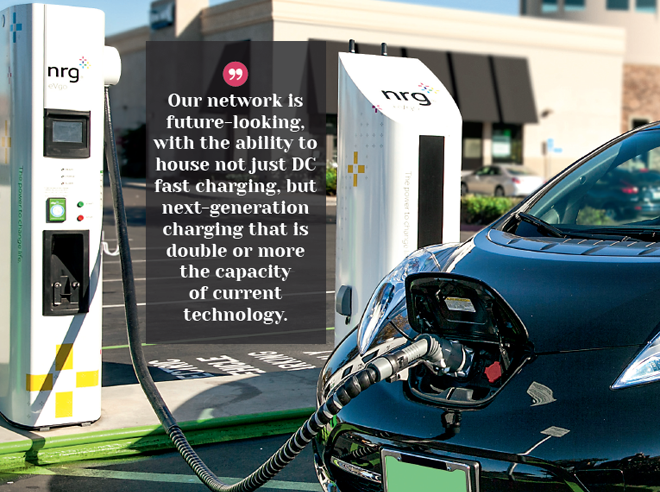

Charged: Brendan, after more than 20 years with Nissan, you moved to a leading role at NRG EVgo. What led you there?
Brendan Jones: Last year at Nissan we sold more than 30,000 LEAFs in the US, which was a fantastic accomplishment. I feel that the next level for EVs is building the premier national DC fast charging network. This is an accomplishment that is aimed at serving not just one OEM, but all EVs into the future. As the number and type of vehicles available in the EV marketplace continues to grow and expand, barriers to EV adoption shrink, and consumers’ biggest questions about range and aesthetics are fewer and fewer. Then, eventually all concerns regarding range are resolved. That makes a fast, reliable network the most important piece of the puzzle.


Charged: In the past year, there have been some other projects announced for public DC charging in the 20 kW range. What are your thoughts on the power levels of current and future fast chargers?
BJ: The future moves fast, and for EV charging that future is based on speed of delivery. EVgo is already the industry leader in DC fast charging, with most Freedom Station sites capable of providing up to 40 miles of range in just 15 minutes. But the very near future suggests that anything below 50 kW is not going to be considered fast charging.
EVgo’s vision of fast charging includes laying the groundwork for future chargers to deliver 100 kW. Our stations are designed to adapt to standards as they improve and shift with the rapidly evolving technology of both the charging infrastructure and the needs of the vehicles being charged.
Overall, EVgo’s business model is to support all EV brands and, at least initially, we believe that the vast majority of EV owners purchase their vehicles for intra-city driving. That is why EVgo began with comprehensive metropolitan coverage of EV infrastructure, and we are now serving 26 cities. As automakers are planning larger capacity batteries and longer range, 200 miles and above, EVgo is now focusing on providing a comprehensive inter-city charging infrastructure as well, allowing EV drivers to drive nationally with more range confidence.
Charged: California has been a huge focus for Nissan and for EV infrastructure in general. How is the build out of that area coming along?
BJ: There is no doubt that a number of the individual markets in California, and the state as a whole, are the most aggressive buildouts in what is already the nation’s largest EV market. Currently, there is no other network in the Golden State that can compare to NRG’s scope in terms of charging any DC fast-chargeable vehicle.


California has more than 200 NRG EVgo fast chargers. The network supports both the CHAdeMO standard that’s used by the largest number of EVs on the road, and the CCS standard that supports some of the newest EVs. These chargers are found at Freedom Stations, stand-alone locations at high-use areas and publicly-accessible sites at car dealerships. Individually and combined, they comprise the largest fast charger network in any state in the nation, stretching from San Diego through Los Angeles to San Francisco and Sacramento.
Drivers are proving the increasing value and need for available fast charging, highlighted by a 135 percent increase in station use in the last three months of 2014 over the previous three months.
Charged: What is your strategy for choosing site locations?
AB: In order for a network to be successful, it needs to serve the customer where and when they need it. We have found that what drivers want is ease of access and something to do while they charge.
EVgo has signed partnership agreements with 59 retail hosts all over the country, including Simon Properties, Macerich, Kimco, Whole Foods and Walgreens. These agreements continue to grow, putting our stations in prime parking locations. Our partnership with Simon now totals more than 60 locations nationwide at high-end and well-located Premium Outlet Malls and other locations. The first of those sites opened in 2013 with the Freedom Station at Fashion Valley in San Diego. These are prime destinations in and of themselves. You need look no further than Copley Place in Boston, Leesburg Corner and Hagerstown Premium Outlets in the Greater Washington DC area, or the Town Center at Cobb, Mall of Georgia, and Lenox Square of Phipps Plaza in the Atlanta area.
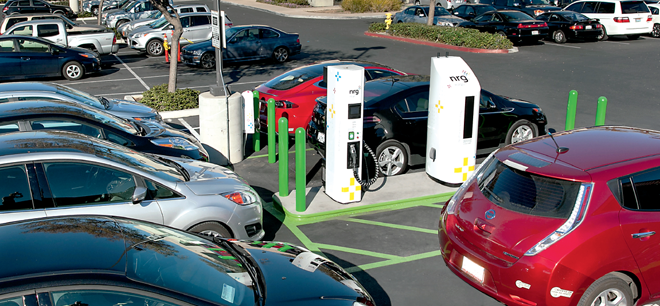

We have a number of important factors we consider in charger placement, everything from safety to ease of access to hours of availability. The placement of a Freedom Station is generally within feet, not miles, of a major thoroughfare or freeway, giving drivers not just a place to plug in, but also a true destination. Our future includes linking these metro areas together to allow for confident driving for EV owners of all ranges.
This article originally appeared in Charged Issue 19 – May/June 2015.


